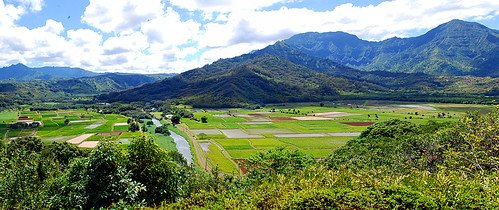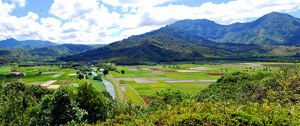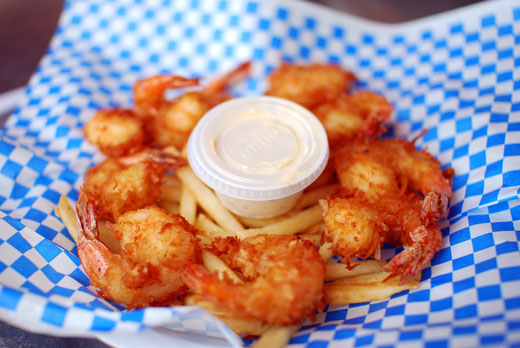
Until now, the only thing that I knew about Hanalei was that it was the birthplace of Puff the Magic Dragon, which is apparently, a lie.
Taro fields near Hanalei, Hawaii



Until now, the only thing that I knew about Hanalei was that it was the birthplace of Puff the Magic Dragon, which is apparently, a lie.

Some of the best food in America comes in shacks, lean-tos, vans, makeshift structures cobbled together from plywood and tarpaulin and fryer grease. The American food that Americans aspire to eat and inspires the most column inches in this decade seems to sit either at the bottom or at the top, either food van or haute cuisine, but rarely in the middle.
Talking about the middle seems to be more about despairing about the industrialisation of food, big corn, the banality of the corporate chain restaurant and the emptiness of the American home kitchen. American food is hollow in the centre. As a result, the food that Americans aspire to eat from other cultures tends to sit in the middle – home-cooked is shorthand for “authentic” if some other culture is standing in front of the household stove. Your locavoring Alice Water-y folk will argue otherwise.
It bookends neatly with my approach to food: that strange mix of street food and top end – although I am a bit tempted by the taro pie on McDonald’s special Hawaii menu here in Kauai because it combines two things that I despise made good by the deepfryer. I’m more here to surf than eat but food from a shack beckons.
The Shrimp Station in Waimea sits alongside the highway en route to Waimea Canyon and picks up the day-tripping crowd in either direction – it’s almost opposite the faded beachside deco majesty of the local cinema and market.
The drawcard is dealt straight from the deep fryer: Coconut Shrimp. Prawns in a crispy batter with shreds of local coconut, on fries. They’re top notch.
The shrimp taco is a little less inspiring – tasty, fresh salsa but a bit light on the prawn.
Location: 9652 Kaumualii Highway, Waimea, Hawaii
Tel: (808) 338-1242

It’s taking me a while to catch up on my reading at the moment, but Mark Bittman’s overview of the decline of fish is worth a look. From Bittman:
Industrial aquaculture — sometimes called the blue revolution — is following the same pattern as land-based agriculture. Edible food is being used to grow animals rather than nourish people.
This is not to say that all aquaculture is bad. China alone accounts for an estimated 70 percent of the world’s aquaculture — where it is small in scale, focuses on herbivorous fish and is not only sustainable but environmentally sound. “Throughout Asia, there are hundreds of thousands of small farmers making a living by farming fish,” said Barry Costa-Pierce, professor of fisheries at University of Rhode Island.
But industrial fish farming is a different story. The industry spends an estimated $1 billion a year on veterinary products; degrades the land (shrimp farming destroys mangroves, for example, a key protector from typhoons); pollutes local waters (according to a recent report by the Worldwatch Institute, a salmon farm with 200,000 fish releases nutrients and fecal matter roughly equivalent to as many as 60,000 people); and imperils wild populations that come in contact with farmed salmon.
Originally, Last Appetite was going to be about the collapse of fish. Maybe I should revisit that when the fish stocks that have already collapsed hit 50%. Which is possibly now.